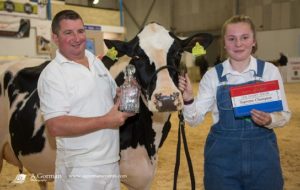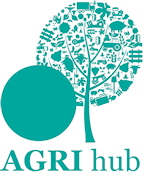 The future of dairying was on display at this year’s Dairy Show, with outstanding cattle, new developments in robotics and advice on changing policy.
The future of dairying was on display at this year’s Dairy Show, with outstanding cattle, new developments in robotics and advice on changing policy.
The show attracted an enthusiastic crowd, with over 6,100 visitors through the gate – an increase on last year that demonstrated farmers were keen to see the showmanship and learn about the latest developments and products in the industry, said Alan Lyons, head of shows. “With over 300 trade stands, there was no lack of innovation on display and over 300 cattle entries saw a wealth of championship quality dairy cattle on show, leading to fierce competition in the ring.”
The interbreed championship saw some of the best cattle from around the country pitted against one another, with last year’s reserve taking the top spot. The award went to the Elwyn, Cherly and Anwen Thomas from Carmarthenshire for their junior cow, Noremead Baxter Kansas. Reserve went to the Llewellin family, for their homebred intermediate cow, Riverside Tequila Hazelnut. “The quality of cattle on display was phenomenal,” said Mr Lyons. “The turnout this year really proved how dedicated the dairy industry is to producing world class animals.”
For the first time in over 10 years, the Jersey Cattle Society hosted its national show and it was a roaring success. The quality of animals really impressed breed judge, Robert Jarrell, who flew over from Ontario, Canada, to attend the event. “I am very impressed with the quality of cows in the UK.” Mr Jarrell awarded breed champion to Riverside Tequila Hazelnut as she presented tremendous style that spelt milk.
The English Guernsey Cattle Society also hosted its national show, with a fine display of animals competing, said Mr Lyons. Champion Guernsey went to M & C Greenslade from Devon, for their senior cow, Blacknor Cracker Iceberg Diana.
The dairy industry is very much supported by the veterinary profession, and the awarding of the fifth Dairy Industry Vet of the Future at the show proved that new vets are incredibly dedicated to the future of dairy. The award went to David Melleney from the University of Cambridge Veterinary School for his dissertation on ‘Can milk fat to protein ratio indications from a robotic milker predict sub-acute ruminal acidosis’. Mr Melleney felt the award was a real positive step for the large animal veterinary profession.
The two runners-up impressed the judges with their projects, raising important questions for the industry to address. Sarah Boulding from the University of Liverpool addressed ways of diagnosing caustic bacteria in mastitis through gene sequencing. While Jess Reynolds, from the University of Nottingham, presented a project on the impact of Johnes disease on productivity.
The show also hosted a number of seminars looking at subjects from digital dermatitis and its increasing spread, to herd health and antibiotic resistance. In Speakers’ Corner, topics such as labour, milk prices and Brexit were tackled by NFU dairy chairman Michael Oakes, John Allen at Kite Consulting and Farmers For Action’s David Handley.
Micron Bio-systems, a headline sponsor of the event, felt it offered the perfect opportunity for them to catch up with their customers face-to-face. “We can get ideas to adapt our products to the environment they are needed in,” said David Turnbull, technical director.
Main sponsor, Pearce Seeds, was celebrating 50 years of trading. Commercial manager, Allan Tuffin, was pleased with the good uptake of the dairy industry to recognise hygiene as important.
Lely, winners of the of best external trade stand competition, were at the forefront of automation, and were celebrating 25 years of robotic milking. This year Lely had taken the lid off its robot milker by removing the side casings so visitors could see the technical workings of the robot. “Lely are all about automation and trying to make the industry as sufficient as possible – the main thing nowadays is getting up productivity,” said Ian Tossell, manager at Lely.
Showing is all about supporting the dairy industry and helping it develop towards a successful and profitable future, said Mr Lyons. “The turnout really proved that the industry is banding together with the intention of firmly putting the dairy crisis behind it and is now focusing on efficiency and sustainability.”




